Australia is a forgotten country for many in the USA. It’s a continent unto itself with regional importance, but with little bearing on those living half a world away. This country of more than 20 million people, on a landmass nearly the size of mainland USA, is currently going through an economic boom thanks partly to its mining industry and the demand of industrializing nations like China to access its metals and minerals.
Australia’s legacy as a British settler colony lives on in the contemporary neo-colonial treatment of Aboriginal people. One percent of Australia’s population identifies as Aboriginal (1), and the reality of this population offer insights into settler-Aboriginal relations for countries around the world.
Archeological evidence shows Aboriginal people have inhabited Australia for more than 40,000 years. In the late 18th century, England began exporting its convicts there after the land was deemed terra nullius (or "empty land") by explorers. The presence of Aboriginal people watching from the shores did not faze the sailors who were eager to report to the Queen that new land for penal colonies had been found which could ease over crowding in Mother England.
This false invisibility of Aboriginal people to settler Australians and the perception of white superiority persisted through the 20th century and culminated in the Stolen Generation, which lasted from 1910 to 1970. During this time at least 100,000 Aboriginal children and children of ‘mixed’ descent were forcibly taken from their families and placed into internment camps, orphanages, and other institutions where they were prevented from speaking their own languages and were deprived of any contact with their families. In these communities government policies overlooked indigenous knowledge and social organization, and attempted to turn Aboriginal young people into ‘proper’ citizens of the Crown.
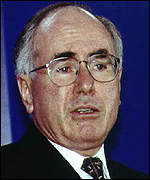
Only in 1967 were Aboriginal and Torres Strait Islanders included in the national census and granted the right to vote. Though various forms of apology have emanated from the government level, including a national "Sorry Day" to mourn the mistreatment of Aboriginal people, rampant racism and denial persist in Australia, modeled at the national level. When John Howard was Prime Minister (from 1996 until December 2007), he stated that Australians should not be asked to apologize for acts that they have not committed. This position ignores the benefits the descendents of settlers have reaped at the expense of the country’s traditional owners.
Most recently, the intervention by the federal government into Aboriginal communities in the Northern Territory has stirred up public outcry. The lessons of this botched intervention should be duly noted to avoid such a situation occurring in other indigenous-settler relationships around the world.
Why an Intervention?
In response to concerns of child safety, the Northern Territory created a Board of Inquiry into the Protection of Aboriginal Children from Sexual Abuse in 2006. In June 2007 this board published their report, entitled "Ampe Akelyernemane Meke Mekarle – Little Children are Sacred," which found high levels of sexual abuse of children in some Northern Territory Aboriginal communities.
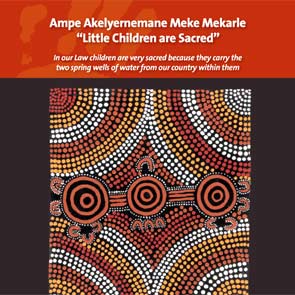 This report set the stage for Australia’s Federal Government under then-Prime Minister John Howard, to intervene with wide-ranging control over the life and affairs of Aboriginal people in the Northern Territory. Claiming a "national emergency," Howard’s intervention included increasing army and police presence in Aboriginal communities, banning alcohol, and quarantining welfare payments to give the government control of how welfare money is spent.
This report set the stage for Australia’s Federal Government under then-Prime Minister John Howard, to intervene with wide-ranging control over the life and affairs of Aboriginal people in the Northern Territory. Claiming a "national emergency," Howard’s intervention included increasing army and police presence in Aboriginal communities, banning alcohol, and quarantining welfare payments to give the government control of how welfare money is spent.
While the protection of children is undoubtedly important, the government’s response has been roundly criticized for being heavy-handed. Even an author of the "Little Children are Sacred" report, Pat Anderson, noted that, "There is no relationship between the Federal response and our recommendations. We [the writers of the report] feel betrayed and disappointed and hurt and angry and pretty pissed off at the same time."(2)
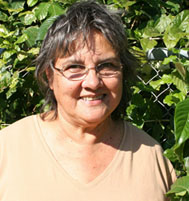
Indeed, the flaws in the government intervention seem tremendous. The intervention essentially ignores local knowledge and overlooks the partnership approach with Aboriginal communities. The Howard government’s intervention plan does not acknowledge that sexual abuse is not isolated injustice; there is a connection between abuse and poverty, unemployment, and substance abuse. In other words, sexual abuse is related to the structural violence experienced by Aboriginal people in a settler-controlled nation. The violence of poverty and the legacy of trauma and cultural humiliation associated with the Stolen Generation and other government policies must be addressed in conjunction with sexual abuse.
Dr. William Glasson, a member of the Northern Territory Emergency Response Taskforce, wrote that, "social factors such as overcrowded housing, lack of education, and limited employment opportunities, along with environmental health issues such as lack of clean water, washing facilities, and functioning septic systems all influence health outcomes of individuals and the community. Therefore, any target medical strategy must have a broad focus and address all these wider issues which have an impact on the health of individuals."(3)
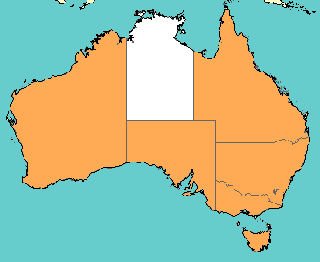
Questions abound as to the soundness and management of the government’s intervention. They have been described by two well-known doctors as "poorly coordinated, poorly planned, and liable to change and backtracking" which has "fueled confusion and paranoia" and threatened to undermine existing programming.(4)
So damning are the critiques of the intervention that political analysis website Crikey, an Australian staple, has stated that "the $83 million medical intervention is in serious and ongoing breach of medical ethics, including National Health and Medical Research Guidelines, Medicare and guidelines on health screening issued by the Royal Australian College of General Practice."(5)
In regard to the increased government control of welfare payments stipulated in the intervention, many parents – indeed the majority of parents – who have not been neglectful of their children will have to hand over control of 50% of their welfare payments to the government. (6) In short, the intervention is a band-aid solution to a deeply structural problem which relies on a racist premise. "It targets people for their background (and skin colour) and not for their actions. It targets Indigenous Australians, and not all Australians who have committed sexual abuse."(7)
The Larger Picture
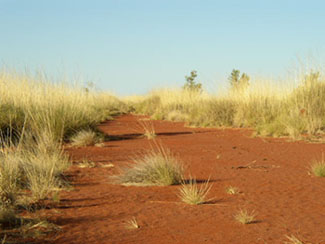
Although the media in Australia has jumped on the Northern Territory intervention as a major new policy problem, in fact, this type of tension between settler and Aboriginal visions of governance and how best to protect the public good has been playing out for a long time. The "Little Children are Sacred" report, irrespective of its contribution to documenting social ills, continues a distressingly lengthy parade of reports whose recommendations have been plainly ignored. The report is unique, however, in the fact that the federal government has used it "as a shield to force the imposition of an existing federal government agenda to dismantle any semblance of collective and individual rights, native title, and self-determination among Australia’s first people."(8)
At this point, an assessment of the underlying reasons for the government’s intervention is helpful. In June of 2007, leading up to a national election, Howard’s Liberal Party government was consistently behind the Labor Party in the opinion polls, and many people saw the over-zealous intervention as a means for Howard to gain support by falsely creating a ‘national emergency.’ However, this plan did not turn in results, and both Howard and his Liberal party were voted out of office in November 2007.
The Labor party’s victory at the close of 2007 has brought in Kevin Rudd as Prime Minister. While campaigning, Rudd consistently supported the federal intervention, and continues his verbal support for the project today, saying that it will be reviewed in June 2008 after one year of being in operation. However, there are suggestions that the Rudd government does not fully support the campaign, as the current chair of the intervention has criticized Rudd for failing to provide specific direction on the project.
It has also been argued that the Northern Territory intervention used the guise of protecting children to allow the government’s systematic attempt to take control of Aboriginal land. While this intervention does not specifically address issues of land title, the increased police and military presence in Aboriginal communities takes place in the context of the Howard government’s earlier abolishment of the Aboriginal Land Rights Act (ALRA) in the Northern Territory. The ALRA had allowed Aboriginal communities to veto mining on their land and its discontinuation was met with much resistance. (9)
Aboriginal Values in a Settler-Regulated World
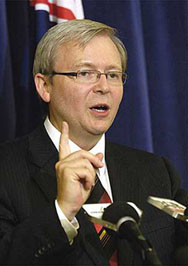
Dr. Peter Tait, a physician in the Northern Territory, says the current intervention is disrespectful to Aboriginal people, and exacerbates inequalities, including health disparities between Aboriginal and non-Aboriginal Australians. "The foundation social determinants of health are social equality and respect," Dr Tait says. (10) "For Indigenous people these are fragile, tenuous, or perhaps even lacking. . . . the logical solution is to create a more equal, tolerant, and respectful society [through] a partnership approach to helping with economic and community development."(11)
Dr. Tait’s view that implementing culturally based solutions could succeed in improving child health has been painfully overlooked. There are complex issues at play related to Australia’s federal government intervention in the Northern Territory. The lessons of the contested Northern Territory intervention are only beginning to be deciphered but should be studied carefully by the international community to avoid potentially disastrous settler-indigenous relations in other situations. Ultimately, if the structural violence done to colonized people is not legitimately acknowledged and rectified, further blame and persecution for transgressions within indigenous communities will spin the cycle of violence and give more excuses for outsiders to take control of Aboriginal people’s most sacred resources: the land and their children.
References:
(1) The full and proper title when referring generally to indigenous people of Australia is Aboriginal and Torres Strait Islanders, thus encompassing the geographic diversity of the traditional owners. However, for brevity in writing, Aboriginal is used in this article to identify indigenous, non-settler Australians.
(2) "The Northern Territory Intervention." Nov 3, 2007 by Reconciliaction. Accessed January 9, 2008 at http://reconciliaction.org.au/nsw/?page_id=42. Because of Anderson’s dedication to advocating for children’s rights and health, Anderson was a finalist for the Senior Australian of the Year Award in 2007.
(3) "Northern Territory Intervention – Help Or Hindrance?" Medical Journal of Australia, Dec 9, 2007. Accessed January 9, 2008 at http://www.medicalnewstoday.com/articles/90818.php.
(4) "Northern Territory Intervention – Help Or Hindrance?" Medical Journal of Australia, Dec 9, 2007. Accessed January 9, 2008 at http://www.medicalnewstoday.com/articles/90818.php. The two cited are Dr. Alex Brown and Dr. Ngiare Brown.
(5) "Revealed: NT intervention checks only 10% of children," by Anna Lamboys of Crikey.com. Sep 17, 2007. Accessed January 9, 2008 at http://www.crikey.com.au/Hot-Topics-List/The-NT-Intervention.html.
(6) "The Northern Territory Intervention." Nov 3, 2007 by Reconciliaction. Accessed January 9, 2008 at http://reconciliaction.org.au/nsw/?page_id=42.
(7) Ibid.
(8) The Northern Territory intervention: voices from the centre of the fringe, Alex Brown and Ngiare J Brown, MJA 2007; 187 (11/12): 621-623.
(9) "The Northern Territory Intervention." Nov 3, 2007 by Reconciliaction. Accessed January 9, 2008 at http://reconciliaction.org.au/nsw/?page_id=42.
(10) "Northern Territory Intervention – Help Or Hindrance?" Medical Journal of Australia, Dec 9, 2007. Accessed January 9, 2008 at http://www.medicalnewstoday.com/articles/90818.php.
(11) "Northern Territory Intervention – Help Or Hindrance?" Medical Journal of Australia, Dec 9, 2007. Accessed January 9, 2008 at http://www.medicalnewstoday.com/articles/90818.php.
Top photo from http://melbourne.indymedia.org/news/2006/10/126371.php
For more information, please see:
Cooperative Research Centre for Aboriginal Health:
National Aboriginal Conference:
http://www1.aiatsis.gov.au/exhibitions/treaty/nac.htm
National Institute of Aboriginal and Torres Strait Islander Studies:
http://www.aiatsis.gov.au/library/links/atsi_links
Australian Government "Indigenous Portal:"
Mneesha Gellman completed her MA in International Studies/Peace and Conflict Resolution at the University of Queensland in Brisbane, Australia in 2007. Josh Dankoff earned his MA in International Development also from the University of Queensland in 2007. They can be contacted at jadankoff (at) gmail.com.
